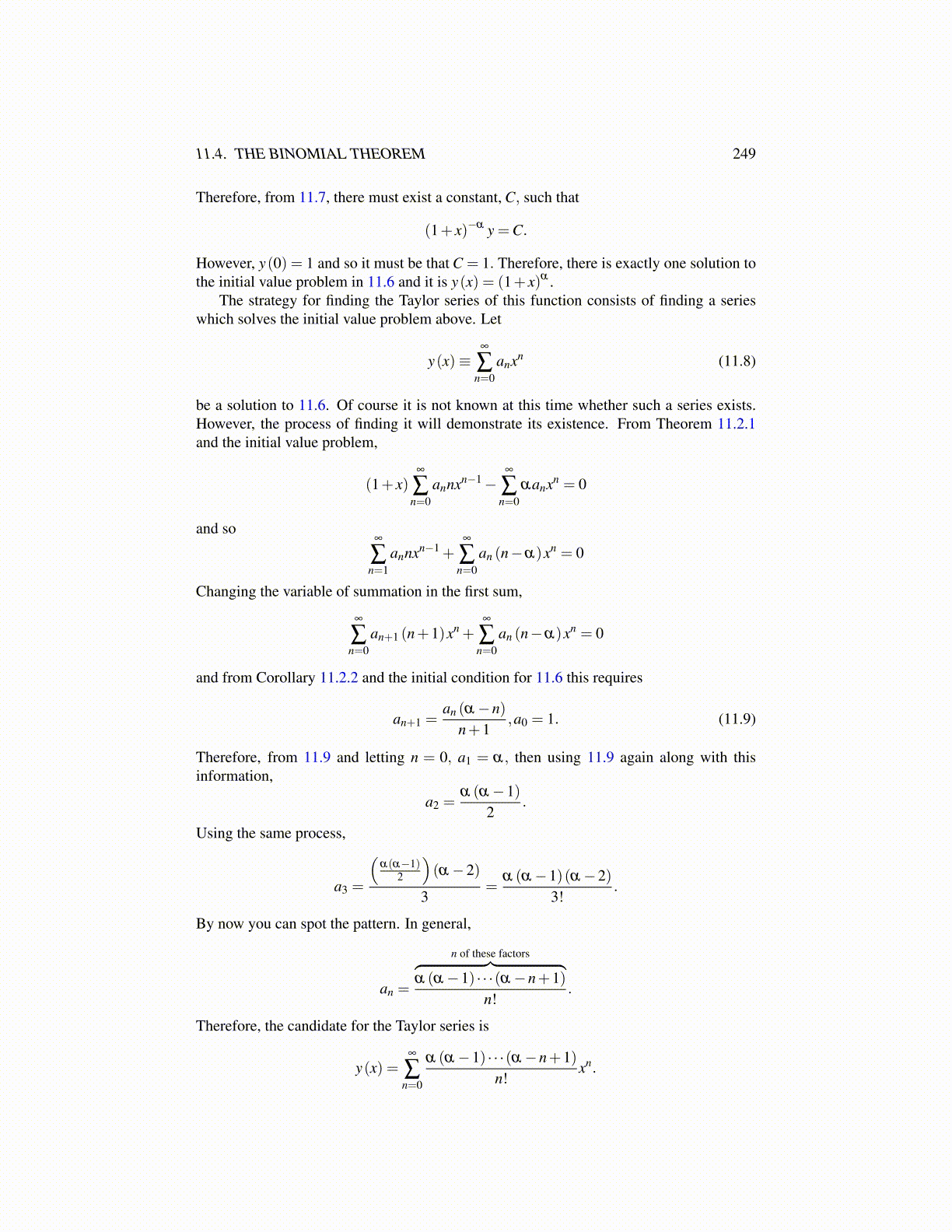
11.4. THE BINOMIAL THEOREM 249
Therefore, from 11.7, there must exist a constant, C, such that
(1+ x)−α y =C.
However, y(0) = 1 and so it must be that C = 1. Therefore, there is exactly one solution tothe initial value problem in 11.6 and it is y(x) = (1+ x)α .
The strategy for finding the Taylor series of this function consists of finding a serieswhich solves the initial value problem above. Let
y(x)≡∞
∑n=0
anxn (11.8)
be a solution to 11.6. Of course it is not known at this time whether such a series exists.However, the process of finding it will demonstrate its existence. From Theorem 11.2.1and the initial value problem,
(1+ x)∞
∑n=0
annxn−1 −∞
∑n=0
αanxn = 0
and so∞
∑n=1
annxn−1 +∞
∑n=0
an (n−α)xn = 0
Changing the variable of summation in the first sum,
∞
∑n=0
an+1 (n+1)xn +∞
∑n=0
an (n−α)xn = 0
and from Corollary 11.2.2 and the initial condition for 11.6 this requires
an+1 =an (α −n)
n+1,a0 = 1. (11.9)
Therefore, from 11.9 and letting n = 0, a1 = α, then using 11.9 again along with thisinformation,
a2 =α (α −1)
2.
Using the same process,
a3 =
(α(α−1)
2
)(α −2)
3=
α (α −1)(α −2)3!
.
By now you can spot the pattern. In general,
an =
n of these factors︷ ︸︸ ︷α (α −1) · · ·(α −n+1)
n!.
Therefore, the candidate for the Taylor series is
y(x) =∞
∑n=0
α (α −1) · · ·(α −n+1)n!
xn.